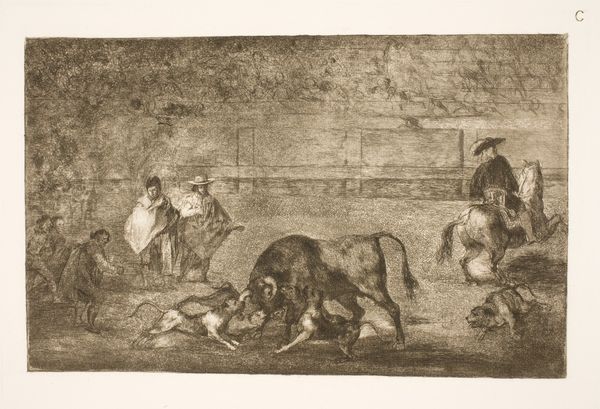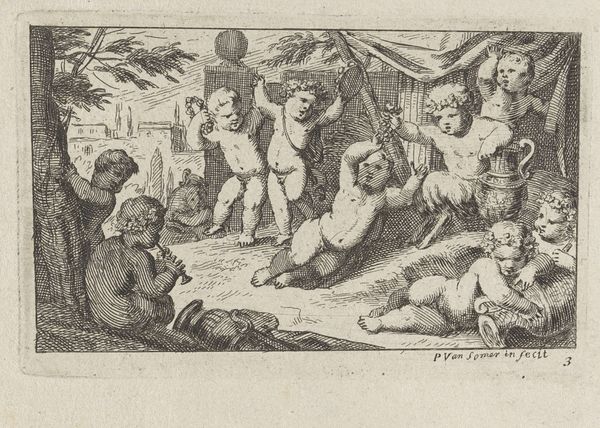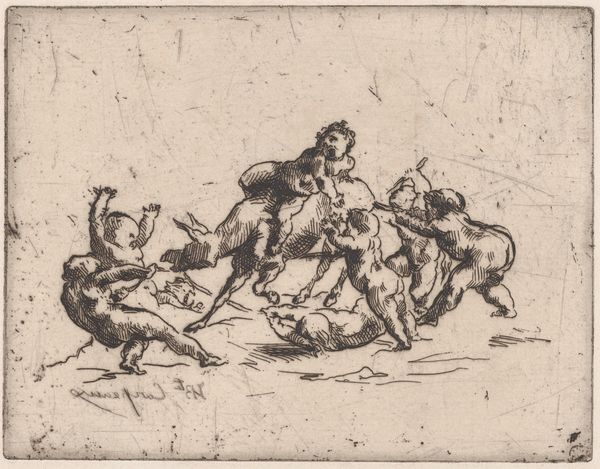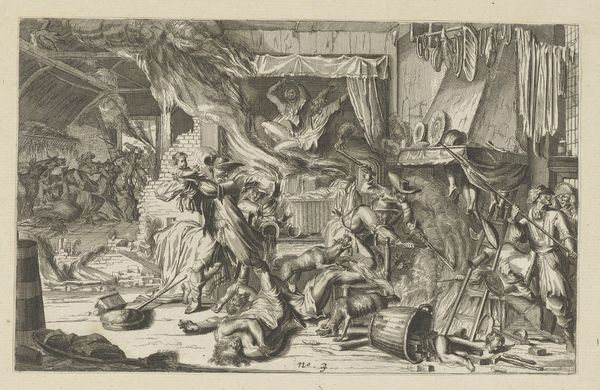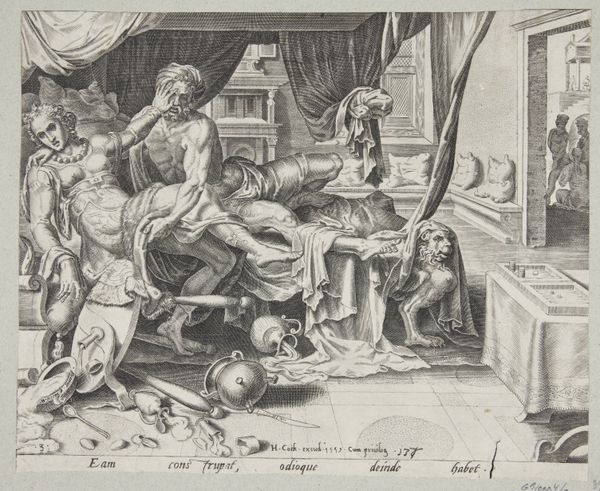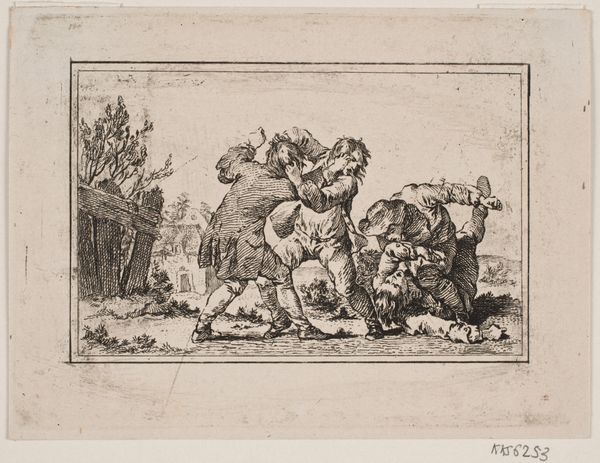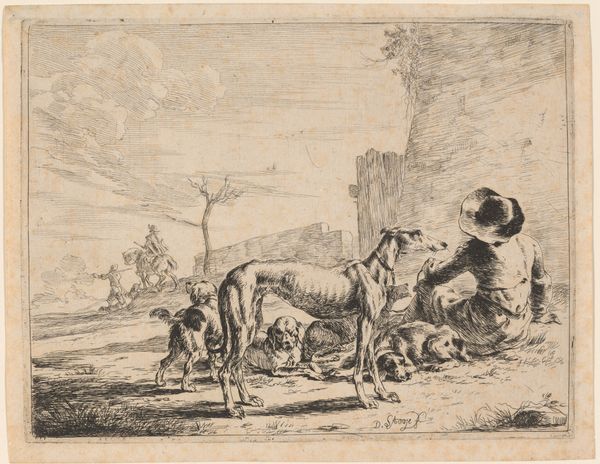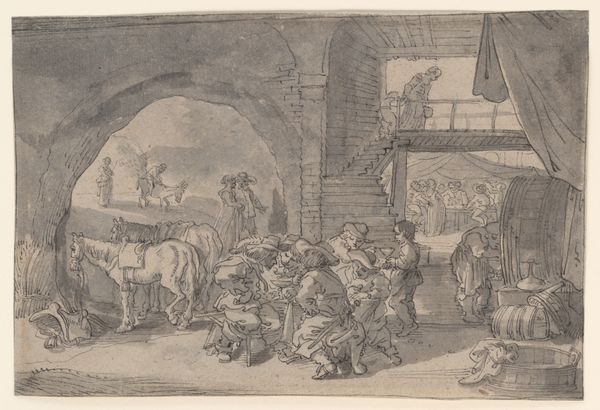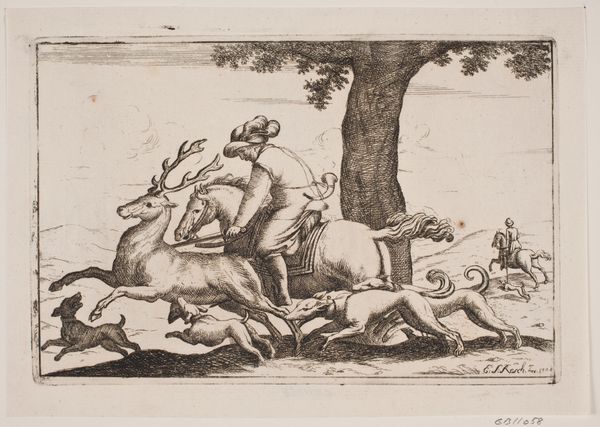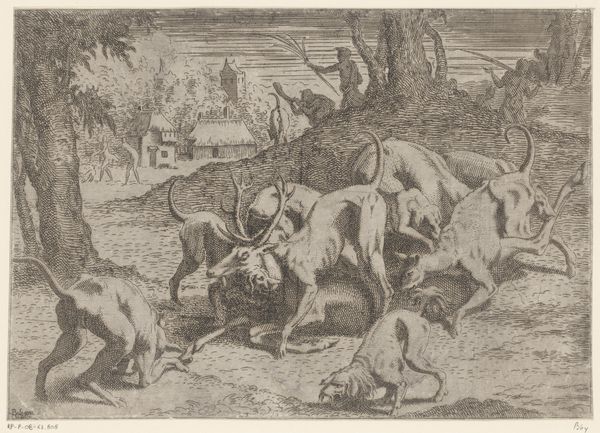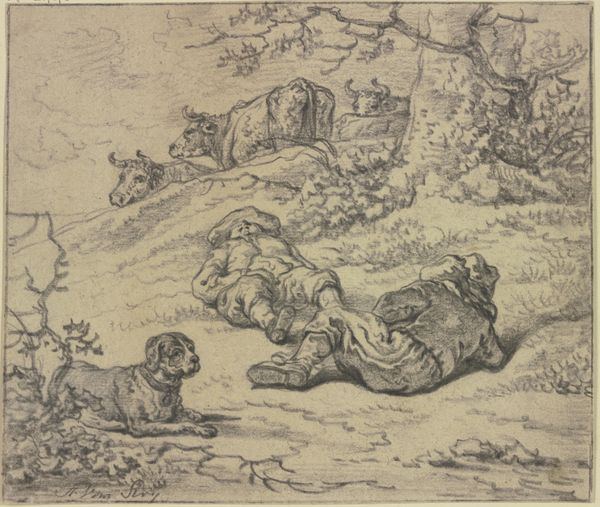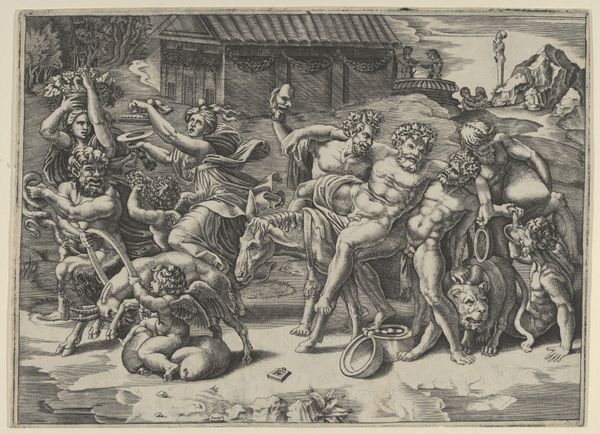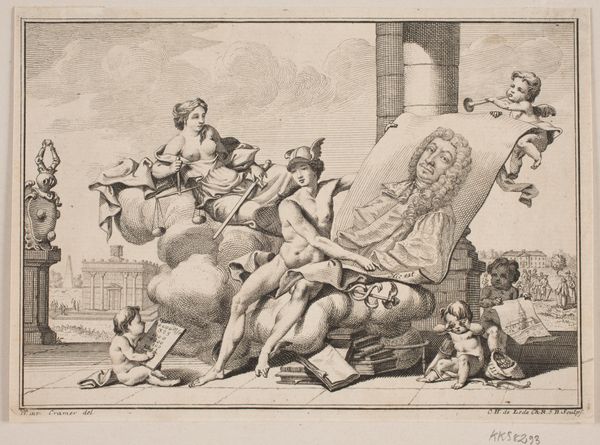
drawing, print, etching, paper
#
drawing
# print
#
etching
#
landscape
#
paper
#
genre-painting
Dimensions: 152 × 210 mm (image); 171 × 226 mm (plate); 179 × 234 mm (sheet)
Copyright: Public Domain
Editor: Here we have Johann Adam Klein’s "Sheepshearing," an etching from 1818. The close quarters and detailed rendering of labour make me think of other industrial scenes from later in the 19th century. How do you see this piece fitting into the art history of its time? Curator: This work offers a crucial window into understanding class and labor at the beginning of the 19th century. Etchings like these circulated widely, influencing how people viewed rural life and work. Who is represented here, and how does the artist depict their relationships to the animals and the space? Editor: I notice almost exclusively women engaged in the shearing, seated in a line along the floor. It seems to emphasize the repetitive, almost monotonous, nature of the work. Curator: Exactly. Klein situates these women within a very specific social framework. Consider how the emphasis on communal labor contrasts with the solitary figure near the door. What might this suggest about changing social structures and gendered roles in rural economies? The print isn't just a snapshot; it’s a commentary. Editor: So you're saying this piece reflects the historical and societal role of women and labor during that era? Curator: Absolutely. This work invites a conversation around visibility and representation. We have to examine whose stories are told and how, within the larger political and economic context. Who held the power to depict and distribute these images, and whose voices are marginalized? Editor: I never thought about the power dynamic within such a seemingly simple genre scene! Now I see this piece speaks volumes beyond just documenting a sheep-shearing. Curator: Precisely. Engaging with art like this enriches our understanding of history as a continuous dialogue with the present, urging us to critically evaluate social relations and representational power.
Comments
No comments
Be the first to comment and join the conversation on the ultimate creative platform.
